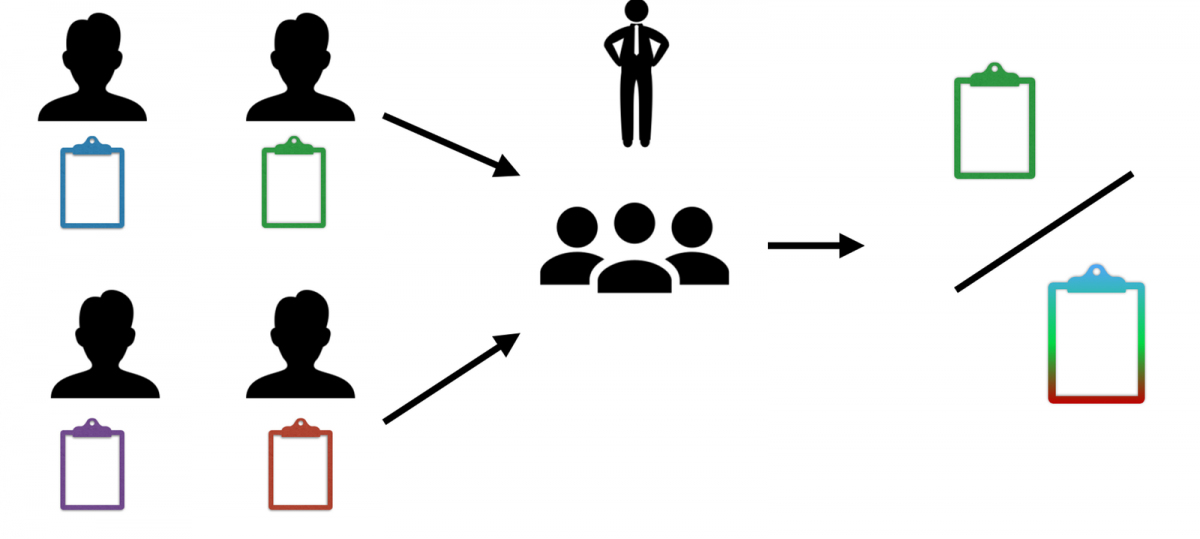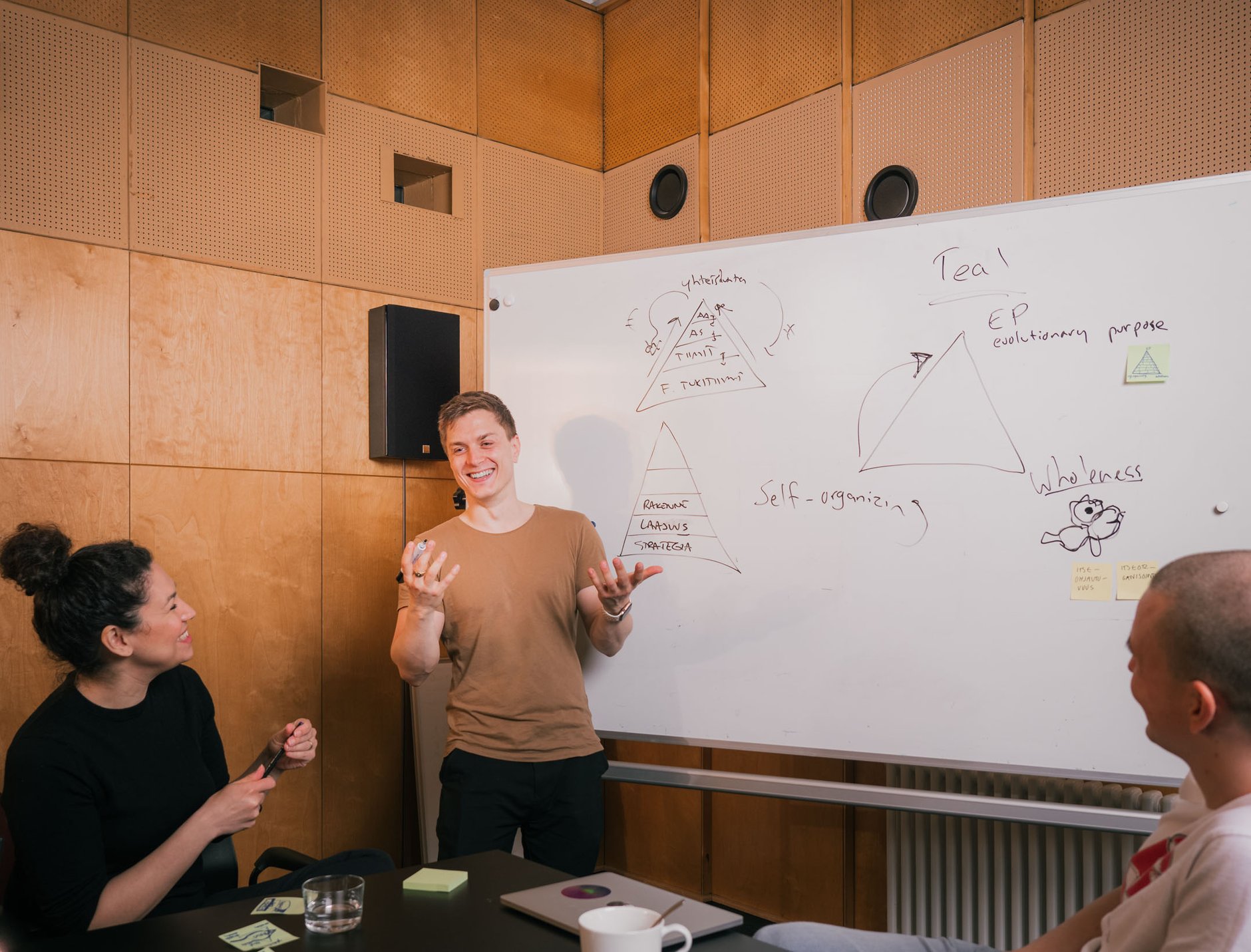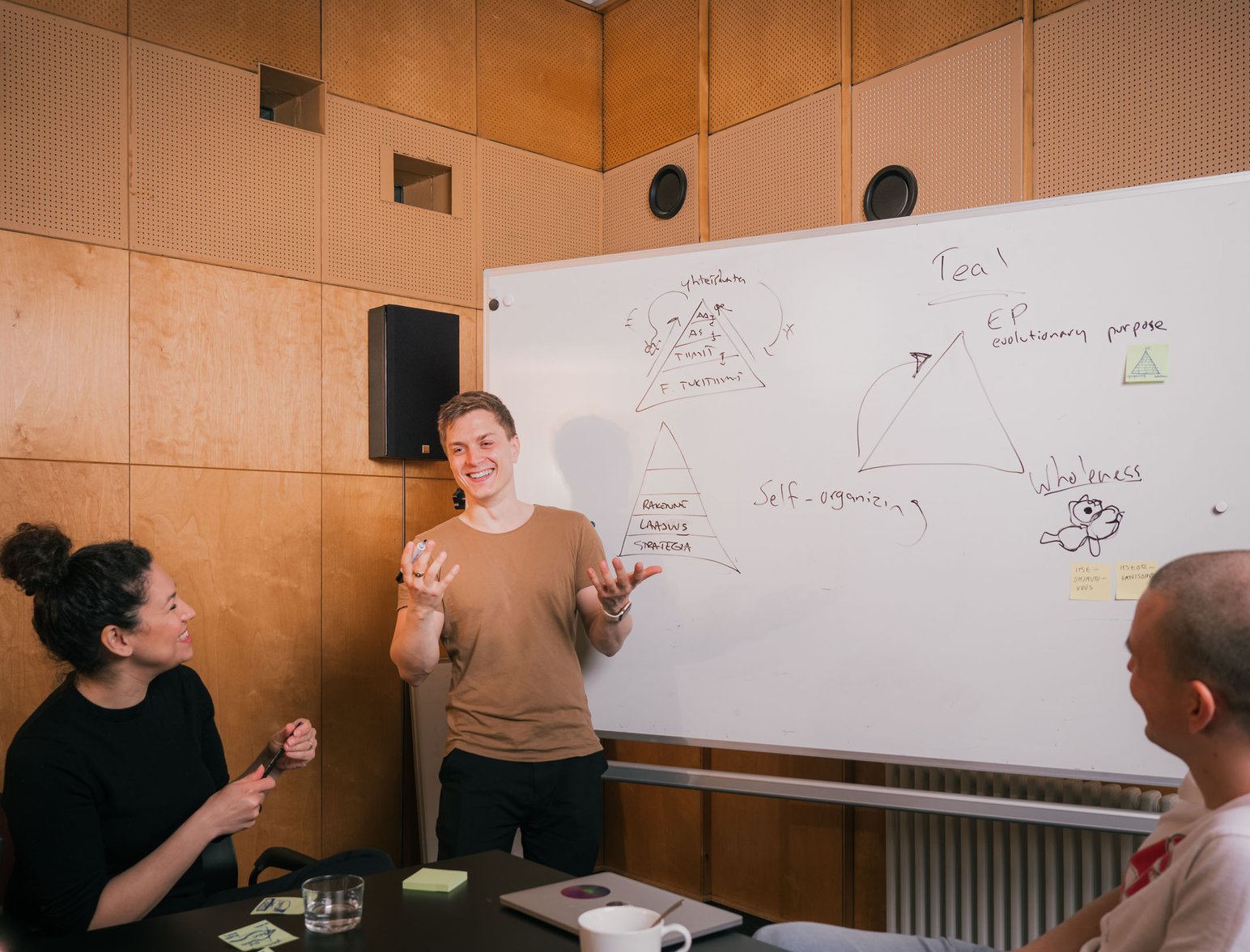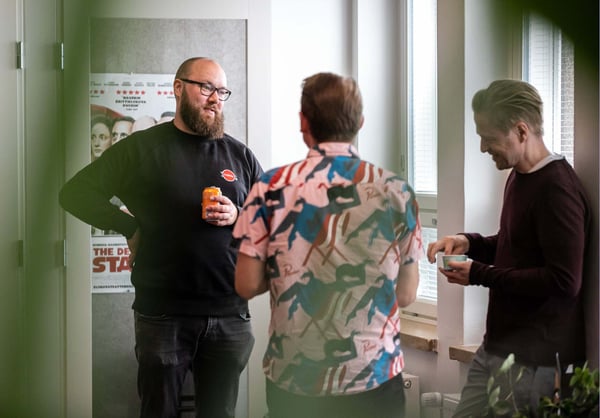Design Sprint is a process that is used to create user-tested features for products, services and many others in a matter of days. Its greatest advantage is that it compresses months of work into a week of co-creation. During the intensive process, ideas are refined into a concept that is turned into a prototype and validated by real people.
From long heavy processes to agile sprints
Jake Knapp originally developed the Design Sprint concept at Google about ten years ago. He noticed that week-long hackathon projects created more results than traditional production models, which could take more than a year to develop solutions that in the end would never even have been tested by a single user. Knapp created a systematic way to turn an idea into a prototype and test it with users in just five days based on design thinking methodologies. This is how the Design Sprint method was born.
Product development often struggles with very limited resources: there is never a limitless amount of time or funds to invest in a project. If decisions are made without the needed information, there is a high risk of putting a lot of time and money into creating products that nobody actually wants to use. This is why agile methods are so effective: we reduce risks by working as lightly as possible. In practice, this means creating concepts fast and refining them after based on real feedback and insights from real users. The Design Sprint methodology allows us to combine fast iteration with user feedback, allowing us to reduce the risks before starting development. The steps in a Design Sprint are the following:
.png?width=872&height=630&name=image%20(31).png)
Quickly, but together
The core idea of a Design Sprint is to bring together a wide range of experts to spend a week on solving a challenge they choose together. At the beginning of a Sprint, the situation and challenges are mapped out and the most important challenge is chosen as the sprint challenge.
Throughout the Design Sprint process the team ideates and shares their results with the rest of the group. These ideas will then be refined into a concept from which a prototype can be built and tested. At the end of the week, the team has learned a lot, both from the project they’re developing as well as from each other. More importantly, the process results in a large amount of information that can be used to create an even better solution or to conclude that the chosen direction didn’t work at all – also an incredibly valuable lesson to learn in a short time with minimum investment.
Keeping in mind the speed and intensity of the Design Sprint process, one might think that the solutions and ideas that come up in the Design Sprint can fall short. I was also skeptical whether something genuinely meaningful could be created in such a rapid time frame. Experience has shown me that although many of the ideas might not work, there are usually a couple of real gems among them that are definitely worth focusing on. When you put together a diverse enough team, great solutions are born. Everyone gets their turn to shine in applying their strengths, which don’t always correspond with their job titles.

Learning by doing
It’s hard to put into words how much information is generated during a Sprint. It’s always fascinating to see a CEO answering a back-end developer’s questions about their API concept or to notice the joy in the eyes of the project manager when their UI concept is voted as the best-functioning solution an hour after they were appalled by the thought of having to draw!
Although five days of intensive work is demanding for everyone involved, a Design Sprint creates dozens of interesting ideas and solutions. Perhaps the most valuable part of it all is that the team spends a week ideating together: a spirit of close cooperation and as a result, a concept or a solution that has been tested with real people. Sprint process will always benefit you in learning and to gain a better understanding of the challenges and opportunities of a project.
Note and vote
A key aspect of the Design Sprint method is that everyone is given the opportunity to express their own ideas, after which the group votes on the best solution together. As a result there are two ways to go ahead; either one person’s solution is chosen for further development or the group takes the best ideas and synthesizes them into a new solution.
An important part of Design Sprints (and workshop facilitation in general) is to try to respect the time constraints and focus more on the process itself than on individual results: you can always refine the ideas and individual elements. Increasing the timeframe of the Design Sprint would take away from its purpose and would start to remind us again of the traditional workflow. Fast work and testing it with real people brings us better results than a polished definition. Only when the user gets to experiment with the real features can we be sure that we are on the right track.
.png?width=872&height=244&name=image%20(30).png)
Try Design Sprint methods in practice
The Design Sprint is a comprehensive set of interactive methods that can be used both to define challenges and to come up with solutions for them. You don’t necessarily need to devote yourself immediately to the whole process; instead, you can pick the methods that suit you and your current situation.
Although a blog article is not necessarily the best way to give all the answers needed for starting using the method, we want to offer you the tips below for trying out some of the Sprint methods.
- A light experiment can be a two-hour workshop meeting involving people from different teams.
- Tell the participants that the aim of the workshop is to try out agile methods in terms of coming up with solutions. Ask them to have an open mind and courage to commit themselves to the process.
- Ask the participants to write down on notes on the most important things to tackle next in your project. Give them three minutes to write down their answers. (You can always adjust the instructions to better fit your needs.)
- After that, give the participants a minute to consider which note they find the most important. Ask them to place it for everyone to see (you can use a tool such as Mural, Miro, Google Whiteboard or Slides, i.e. a virtual canvas, to cooperate remotely). If multiple notes have the exact same goal, remove them from the board.
- Next, give all the participants 1–3 votes and ask them to vote for the most important notes, i.e. the ones the project should focus on. Use red dots or the voting functionality of the virtual whiteboard you’re using for voting. Three minutes should be enough to assess and vote.
- Prioritize the notes according to the number of votes – place the most voted note the highest, the second most voted below it and so on. If you have two or more notes that received the same number of votes, you can have a second round of voting in which the participants can cast one vote for one of the notes. Finally, you should have a mutually chosen priority goal for your project. You can always come back to this stage and repeat the next steps for the other goals as well.
- Formulate a question about the goal that begins with the words “how might we”. For example, if the goal is “Generate more turnover”, the question can be: “How might we generate more turnover?”.
- Now is the time to come up with solutions. You can, for example, carry out lightning demos in which each person has 10–15 minutes to find an example on the Internet of a solution that might be suitable for the goal of your project. The participant finds an example, takes a picture or pictures of it and describes the content of the solution in bullet points. Everyone is given 3–5 minutes to present their solution and explain how it could be applied to your situation.
- Vote on the lightning demos and select the demo that you believe in the most as a group.
- Using notes, ask each participant to come up with rough visualizations (such as user interface sketches) of what the solution might look like when applied to your project.
- Share the visualizations with each other and vote for the idea you believe in the most.
Based on this, create action points for the experiment: Who could develop the idea into an experiment so that you could test it with your target group? What would a successful experiment be like? And when would it take place? - Decide how the organization can support the experiment and pick the employees who would carry it out, for example by reducing their other tasks or asking for additional support from other people.
Even if you end up deciding not to turn your ideas into actionable steps, the exercise will generate useful discussions that wouldn’t otherwise take place, as well as documentation of your ideas and thoughts. Focus on generating ideas and concrete solutions instead of just discussing. During the process, stick to the time limits as effectively as possible.
Learn more with us
We organize Design Sprint coaching sessions where we go deep into the secrets of Design Sprints and offer materials and support so that each participant can carry out their own Sprints, both remotely and on site. Check out the training and let’s chat!





